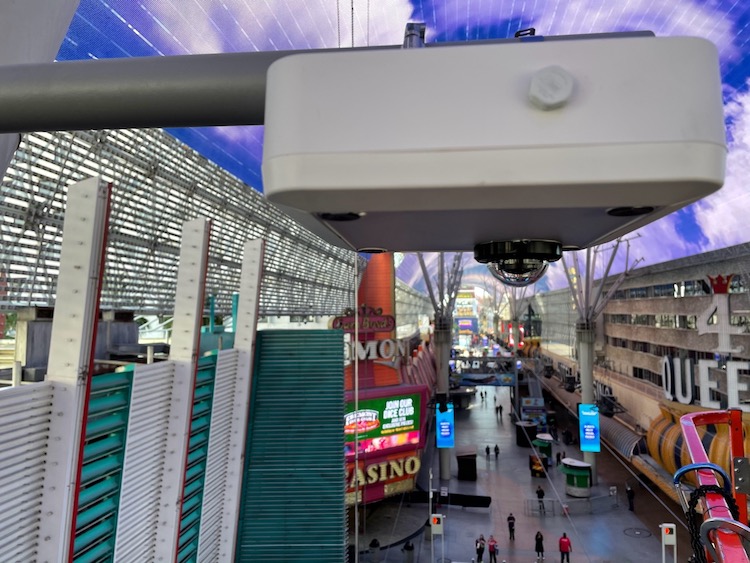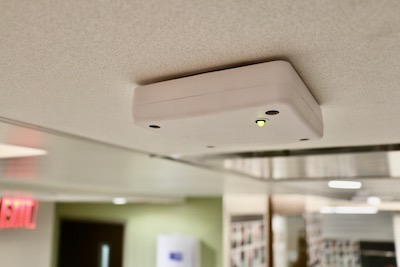
Janos Sallai, PhD’08, is company’s chief technology officer
Gunshot detection technology developed by Vanderbilt engineers and commercialized by a longtime research partner recently helped lead to an arrest in a fatal shooting in Las Vegas.
Within seconds of the first shot in late August 2021, 16 sensors located along the Freemont Street Experience pedestrian mall provided the precise location and video—captured immediately before and after the shooting. The data led to the identification and eventual arrest of the suspect.

Such a success story is gratifying to Janos Sallai, PhD ’08, an early developer of the technology and now chief technology officer at Databuoy, the company that licensed and commercialized it. Databuoy began working with Vanderbilt on the technology, which began as a DoD-funded project, in 2006.
“It was a great time to be at the Institute for Software Integrated Systems,” said Sallai, who was a research scientist and research assistant professor in computer science before joining Databuoy full-time in 2017. “It is a big success of U.S. research funding that 15 years later what we were working on has become the Internet of Things.”
“This is a great example of how technology originally developed for the military finds its way into the civilian world,” said Akos Ledeczi, professor computer science and electrical and computer engineering. “Originally, we were working on locating enemy snipers quickly to protect our soldiers and now the technology helps law enforcement.”
Databuoy, which is based in McLean, Virginia, has installed gunshot detection systems inside schools and courthouses and outside in high crime areas and busy places such as the Freemont Street Experience. The company spent years validating the sensor array technology at indoor ranges, tunnels, and real-world environments. The technology accurately identifies gunshots while classifying and segregating other loud noises such as fireworks, vehicle backfires, popping balloons, or heavy machinery.

“We have had these systems working for years,” Sallai said.
Acoustic detection technology was not the original goal. ISIS researchers and their collaborators were working developing a network of unattended wireless sensors that could self-organize and solve a problem.
“We were working on time synchronization, node localization, and mesh networking when someone from the team suggested these same components put together could be used to track a speeding bullet,” Sallai said. “It was very much a team effort.”
Databuoy branded the product as Shotpoint and is poised to move into sports and event venues, with plans for big box stores and large retail outlets as well. The company also has established strategic partnerships in the security and smart city sectors.
“It is very much an emerging technology and a high-growth market that is taking off,” Sallai said.
Although Shotpoint can’t prevent shootings, the technology can do more than lead to arrests. “First responders know instantly, within a few seconds, where to go—with the location on a map,” he said. “People often bleed out, and first responders can’t get to them because authorities are trying to secure the larger area. With situational awareness they can secure a site in a fraction of time, which will save lives.
“That,” Sallai said, “is where the biggest gratification is.”
Media contact
Pamela Coyle
School of Engineering